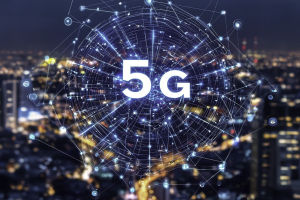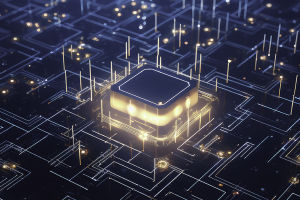Hey Lykkers! The Internet of Things (IoT) is more than just a buzzword—it's transforming the way we live, work, and interact with the world around us. From smart homes to wearable devices, IoT technology is making our lives more convenient, efficient, and connected.
In this article, we'll explore how IoT is used in our daily lives, focusing on four main areas: smart homes, smart cities, wearable devices, and health management. Let's take a look at how this technology is reshaping our daily routines and improving our overall quality of life.
1. IoT in Smart Homes
One of the most common ways we see IoT in action is in our homes. With IoT technology, we can control devices remotely, optimize energy use, and improve home security, all through smart gadgets connected to the internet. For example, smart lights allow us to adjust the brightness or color of our home's lighting from our phone or through voice commands, creating a cozy atmosphere with just a few taps. Similarly, smart thermostats can learn our preferences and automatically adjust the temperature based on our habits, making energy use more efficient.
IoT also boosts security with smart locks and cameras, letting us monitor our homes remotely. With these devices, we can check in on our homes anytime, even when we're miles away. Plus, IoT-enabled home entertainment systems allow us to control our TVs and speakers with voice commands or apps, providing a seamless and personalized experience. From cooking to cleaning, IoT helps automate tasks and makes home management smarter. It's a real game-changer for creating a more comfortable and convenient home.
2. IoT in Smart Cities
As cities continue to grow, managing resources efficiently becomes a bigger challenge. IoT is helping to address these challenges by making cities smarter. In smart cities, IoT sensors are embedded in critical infrastructure, like traffic lights and public transportation systems, to monitor and manage everything in real-time. For instance, traffic sensors can track the flow of vehicles and adjust traffic lights accordingly, reducing congestion and improving overall traffic flow. Similarly, smart parking systems guide drivers to available spots, saving time and reducing traffic.
Smart waste management is another area where IoT is making an impact. Sensors can monitor the amount of waste in bins and optimize collection routes, reducing fuel consumption and improving efficiency. Through IoT, cities are becoming more sustainable and responsive to the needs of their residents, improving the overall quality of life for everyone.
3. IoT in Wearables
Wearable devices, like fitness trackers and smartwatches, are quickly becoming essential in our daily lives. These gadgets track our health data, from heart rate to sleep patterns, and sync it with apps on our smartphones. By analyzing this data, we can gain insights into our health and make more informed decisions about our lifestyle. For example, a fitness tracker can suggest workout routines or provide reminders to help us stay on track with our fitness goals.
For people with chronic health conditions, IoT-enabled wearables are even more beneficial. They can monitor vital signs like blood sugar levels or blood pressure in real time and send the data to doctors for remote monitoring. This kind of technology is revolutionizing health management, making it easier to catch potential issues early and provide personalized care.
4. IoT in Health Management
IoT technology is also transforming the healthcare sector. With remote monitoring, healthcare providers can track patients' health metrics from home, allowing for more timely and effective treatment. For example, IoT devices like glucose monitors and blood pressure cuffs can send real-time data to medical professionals, helping them make better decisions and intervene when necessary.
In addition to remote monitoring, IoT is supporting precision medicine. By analyzing large amounts of patient data, doctors can develop more personalized treatment plans tailored to an individual's specific health needs. IoT is playing a key role in making healthcare more efficient, personalized, and accessible.
In conclusion, IoT technology is rapidly changing the way we live, from the way we manage our homes and cities to how we monitor and improve our health. While there are challenges, like ensuring privacy and security, the potential of IoT to enhance our lives is undeniable. As the technology continues to evolve, we can expect even more innovative applications in the future. IoT is here to stay, and it's up to us to embrace its full potential.
Lykkers, how are you using IoT in your life? Do you have a smart home device or wearable gadget that makes your day easier? Let's chat about how this technology is helping us live smarter, healthier lives!
Smart Home For Beginners - IoT Security
Video: Undecided with Matt Ferrell


